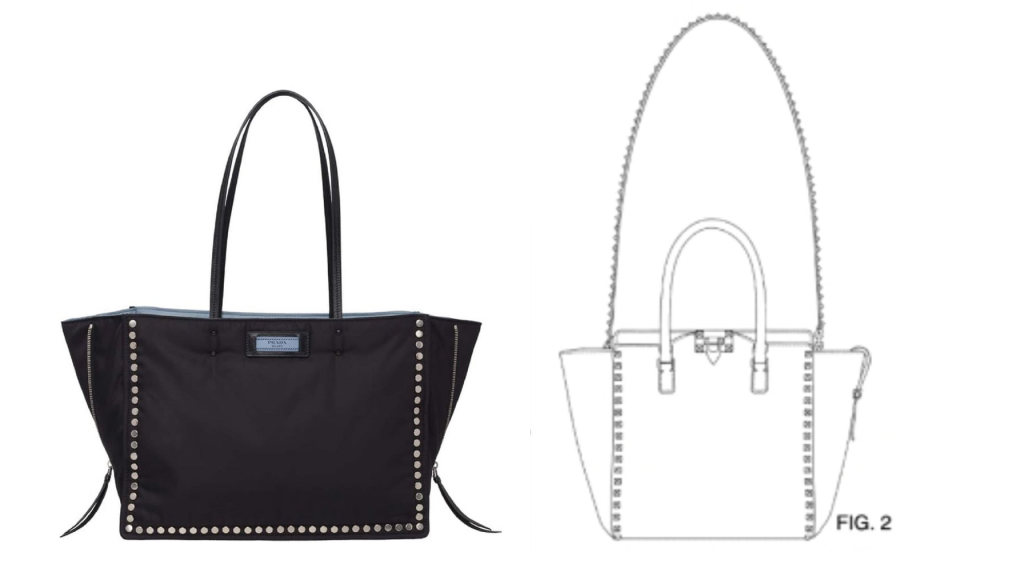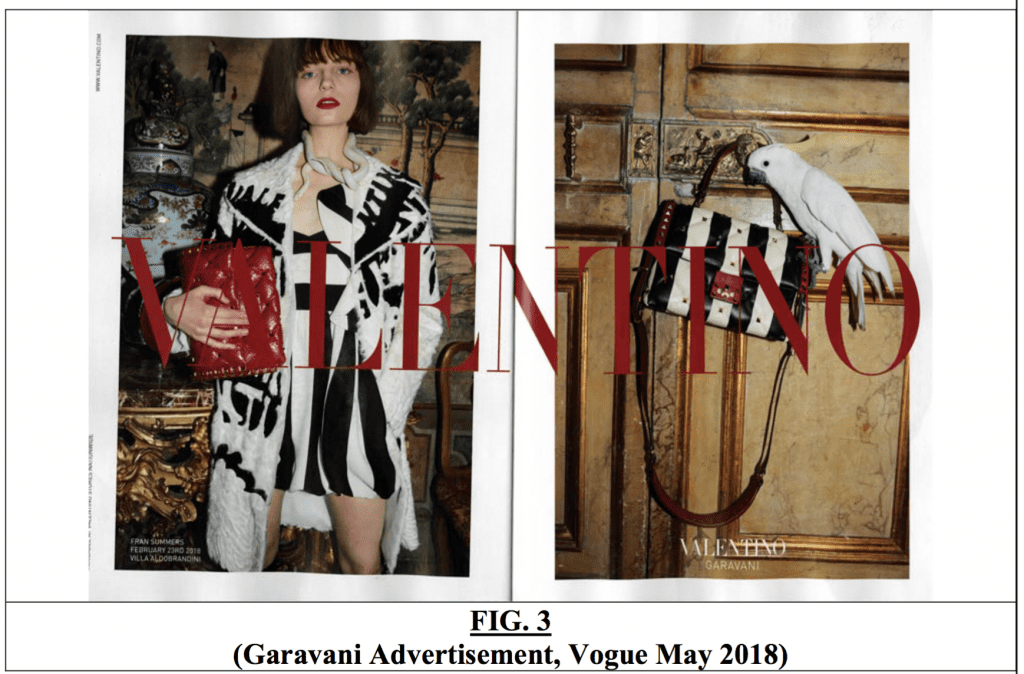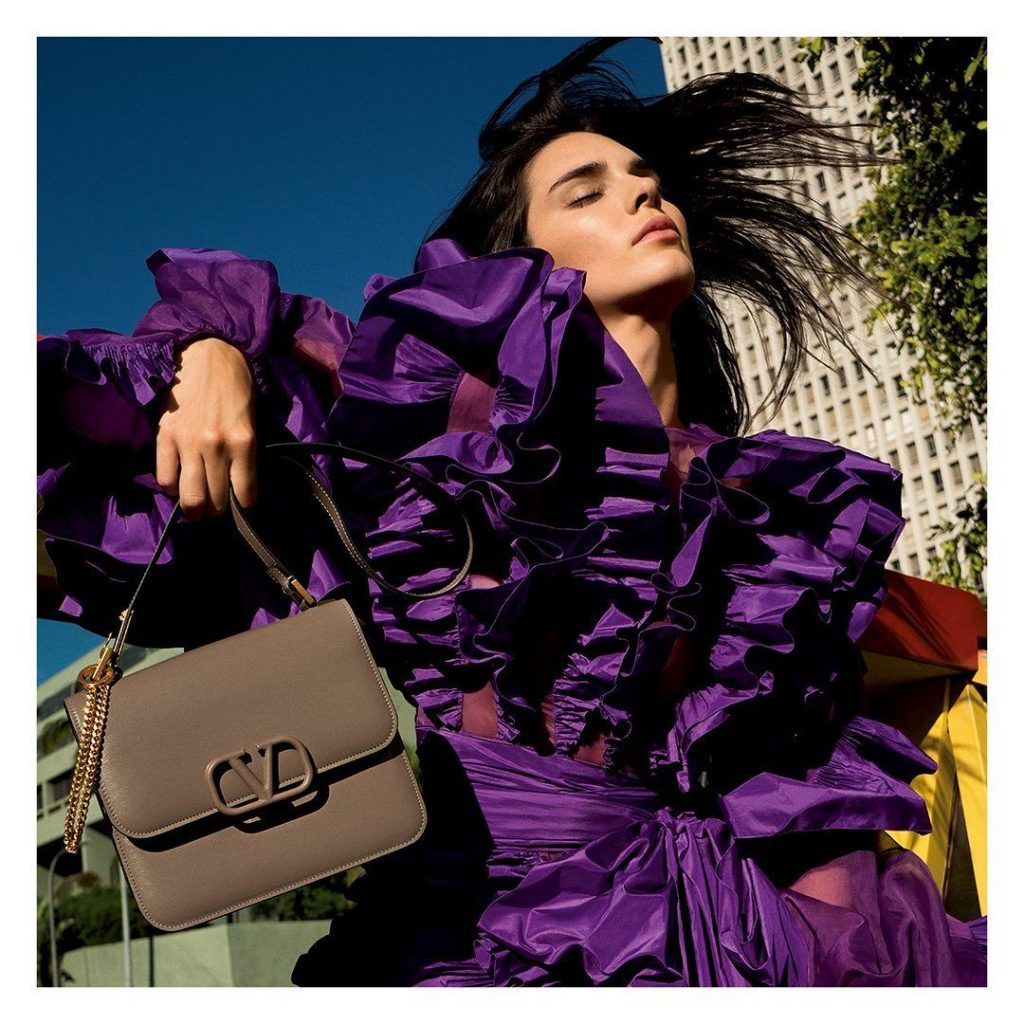Mario Valentino is “the real VALENTINO.” That is what the Italian accessories brand asserts in the latest round of the case waged against it by the larger and more famous Valentino S.p.A. (“Valentino”). For the past year, the two Valentinos have been going back and forth in what could prove to be a high-stakes legal squabble that got its start in July 2019 when Valentino filed suit, arguing that Mario Valentino (“MV”) is blatantly breaching the co-existence agreement that the two brands entered into in 1979 in an effort to avoid legal complications stemming from their nearly-identical names and similar offerings.
In its newly-filed answer, which follows from an unsuccessful quest to get a number of Valentino’s false advertising, unfair competition, and design patent infringement claims dismissed, MV sets the stage. Counsel for the Milan-based company states that despite the level of recognition associated with Valentino S.p.A., “Mr. Mario Valentino – himself a famous designer whose name and reputation have been celebrated for decades and whose brand and fine leather goods have been associated with the likes of Karl Lagerfeld, Giorgio Armani and Gianni Versace – founded the [MV] business in Italy in 1952,” which was “well before” Valentino Garavani launched his brand.
Having built his business initially by making shoes, in the 1960s, MV “expanded into other leather goods, including handbags,” and by the late 1970s, the parties found themselves needing to figure out how to deal with potential consumer confusion. The result was a legally-binding agreement laying out exactly how the two fashion brands would use their various Valentino marks for decades to come.
Fast forward to the summer of 2019 and Valentino accused MV and its American licensee Yarch Capital of breaching that agreement by “marketing their handbags with packaging and related literature that prominently identifies the bags as coming from ‘Valentino,’” and making use of Valentino’s “V” logo, a specific combination of trademarks that it claims is prohibited by the global co-existence agreement. At the same time, Valentino asserted that MV and Yarch have been actively “downplaying or omitting entirely the fact that [their] bags [are] licensed by Mario Valentino S.p.A,” not Valentino.
And case that is not enough, Valentino alleges that MV and Yarch are selling lookalike bags that infringe its own design patent-protected bags.
Delay, Prior Art & Fraud
In response to Valentino’s claims of false association, misleading advertising, and design patent infringement in connection with two Rockstud-adorned Valentino handbags, MV is pushing back, and setting forth 25 affirmative defenses and a number of counterclaims. In furtherance of its laundry list of affirmative defenses, MV argues that it should be shielded from Valentino’s various causes of action. For one thing, MV claims that it is “the first and senior registrant, owner and user of the VALENTINO family of trademarks on [handbags and other leather goods],” and that it has “the absolute right to use ‘Valentino’ by itself on the outside of handbags, ‘V’ by itself on the outside of handbags and/or ‘Valentino’ and ‘V’ together on the outside of handbags.”
This is precisely how the brand says that it has been using these marks for years in the U.S. (and even longer in Europe) without objection from Valentino, thereby, giving rise to another defense from MV: Valentino had “actual knowledge of” MV’s activities “for over 6 years in the U.S. prior to filing any legal action in the U.S.” The 6-year delay between when Valentino allegedly learned of MV’s alleged use of the Valentino and “V” marks and its decision to file an action for false advertising, false association and unfair competition “is clearly unreasonable delay,” according to MV.
Beyond that, MV claims that “over the years, [Valentino] has repeatedly admitted and acknowledged that MV is the senior owner and registrant of the MV trademarks,” alerting its staff on at least one occasion that “the use of the trademarks ‘VALENTINO’ and ‘RED Valentino’ for footwear, bags and leather accessories is strictly prohibited and for these product categories the legitimate and exclusive owner of the ‘VALENTINO’ trademarks is a third company, Mario Valentino S.p.A.”

Turning its attention to Valentino’s patent infringement claims, MV argues that they are barred by prior art. For example, MV asserts that Valentino’s design patent (no. D695,517) for its Glam Lock Rockstud Flap bag “is barred by [a] Tory Burch [bag] design from the Fall of 2009, which pre-dates [Valentino’s] handbag design by almost three years.” The Tory Burch bag “has 4 rows of vertical rock studs in the middle of the handbag, going from the front of the handbag, over the top of the handbag, and to the back of the handbag,” making it “virtually identical to” the Valentino bag depicted in the ‘517 patent.
At the same time, the other design patent that Valentino claims that MV infringed – the design patent (no. D697,713) for its Rockstud-adorned tote bag is also barred by pre-existing and “virtually identical” designs, per MV, including a “studded [Prada] bag that looks substantially similar to [Valentino’s] bag which constitutes prior art, as it dates back to at least August of 2011.”
Still yet, MV claims that it “has used rock studs on handbags (and apparel) since 1992 and thus, also constitutes prior art.”
Given the pre-existence of similar handbag designs (i.e., prior art), MV is arguing that Valentino’s bags do not meet the threshold for patentability. Moreover, MV also asserts in a separate defense that the patents for the bag designs are not up to snuff because the “claimed designs are obvious to a designer of ordinary skill who designs handbags.” (In addition to being new (as determined using prior art), a design must be “non-obvious” in order to be patented).
In a separate but related defense, MV asserts that Valentino’s patent infringement claims are “barred, in whole or in part, by fraud on the U.S. Patent & Trademark Office,” as “relevant prior art was … deliberately and intentionally omitted from [Valentino’s patent] applications … with the intent to deceive the Patent Office, for the purpose of obtaining design patents.”
With the foregoing in mind, MV sets out a handful of counterclaims, asking the court to declare that it has not infringed Valentino’s patents and to deny that the patents are valid “for failure to satisfy one or more of the requirements of … 101, 102, 103 and 112” of the U.S. Code.
Valentino’s Alleged Infringement
Finally, MV asserts it is actually Valentino that is in the wrong when it comes to the parties’ agreement. For instance, the co-existence agreement requires that “in any advertising for its leather handbags,” among other similar goods, Valentino “may only use its symbol and/or ‘VALENTINO GARAVANI,’ and therefore, must utilize the term ‘GARAVANI’ in addition to ‘VALENTINO’ to minimize consumer confusion between the parties.”
Yet, “beginning in Fall 2017 and continuing to the present, [Valentino] has prominently placed ‘VALENTINO’ in its advertising for handbags, removing and/or significantly reducing the appearance of the required term ‘GARAVANI,’” MV argues, or in the case of some of Valentino’s third party stockists, removing any reference to “Garavani” altogether.

No small matter, MV asserts that Valentino’s “handbags have accounted for over $700 million in revenue in the past five years, with over $100 million in the U.S., alone,” and that its alleged improper – and infringing – use of the “Valentino” mark without “Garavani” is part of a larger scheme by the brand “to expand its leather handbag business and reap millions of dollars in profits, so that it could sell its company for a higher price to investors.”
(As we previously noted, where Valentino’s inability to simply use the “Valentino” name on its own (i.e., without “Garavani” or “Couture”) in connection with certain categories of goods seems like it would have the biggest impact is on the value of the brand, itself, in connection with a sale. This is particularly relevant given that much of the value of a fashion company – or any consumer-facing company for that matter – is intrinsically tied to its branding and the intellectual property rights that come with that.)
“Because MV’s senior trademark registrations for the MV trademarks presented an obstacle to [Valentino’s] growth in the leather handbag marketplace, [Valentino] views MV as a historical enemy and has willfully and intentionally infringed MV’s trademarks and unfairly competed with MV in the U.S. and elsewhere.” As such, MV claims that Valentino is “exert[ing] its massively superior financial position to use protracted, expensive litigation to crush MV.”
MV asserts that Valentino has also run afoul of the law on the trademark front. Asserting claims of trademark infringement, unfair competition, false association, and false advertising, MV claims that Valentino’s use of its various “Valentino” and “M. Valentino” marks “on or in connection with the advertising and sale of goods constitutes the infringing use of MV’s registered marks in commerce.”
By using “unauthorized reproductions of one or more of the MV trademarks in connection with the advertising, sale, offering for sale and/or distribution of goods for its own financial gain,” MV claims that Valentino is engaging in “a type of infringement often called ‘reverse confusion,’” which occurs when a more powerful company uses the mark of a smaller, less powerful senior user.
In addition to declarations of non-infringement and invalidity in connection with the patents at issue, MV is seeking a final judgment dismissing the case in its entirety, complete with injunctive relief barring Valentino from using any of the “MV” trademarks and an award of actual damages trebled given that “Garavani’s egregious conduct in repeatedly selling infringing merchandise bearing the unauthorized MV trademarks is willful and intentional, and thus this constitutes an exceptional case.”
*The case is Valentino S.p.A., v. Mario Valentino S.p.A.; Yarch Capital, LLC, 2:19-cv-6306 (C.D.Cal.).











